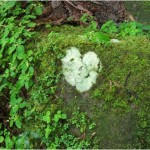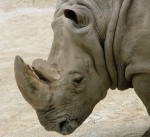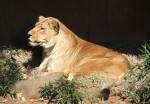 When I first began working in the field of wildlife conservation I was very naïve. It was so easy to come up with solutions to habitat loss and species survival when humans were not factored into the equation. It was so very simple to point an accusatory finger. Part of the learning curve in this line of work is to understand that for every person who carries out atrocities against wildlife and their habitat, there are at least five that want to save them. In addition, identifying the driving force behind such horrific events is just as much of the solution as preventing such occurrences in the future.
When I first began working in the field of wildlife conservation I was very naïve. It was so easy to come up with solutions to habitat loss and species survival when humans were not factored into the equation. It was so very simple to point an accusatory finger. Part of the learning curve in this line of work is to understand that for every person who carries out atrocities against wildlife and their habitat, there are at least five that want to save them. In addition, identifying the driving force behind such horrific events is just as much of the solution as preventing such occurrences in the future.
With more than 7 billion people on Earth, it is now more important than ever to realize that although we may share the same planet we do not share the same cultural beliefs, and it is okay. Kindness, understanding, compassion, and sympathy are not signs of weakness, but of strength. For example, in order to save gorillas I have to understand why they are being killed and their habitat is being destroyed. I not only have to know about the natural history of the gorilla, but also of the people that inhabit the same home range. I have to acknowledge belief systems that have set the boundaries of such societies even when they are not my own. I have to be aware of the concerns and problems that humans in these areas face; I cannot expect a family that lives in fear from civil conflict and who are starving to want to save the gorilla instead of consume it, or use its habitat for charcoal production for warmth, cooking, and trade. Only by factoring human suffering into the equation can I ultimately help the gorilla. This becomes a long-term solution rather than a quick fix.
share the same cultural beliefs, and it is okay. Kindness, understanding, compassion, and sympathy are not signs of weakness, but of strength. For example, in order to save gorillas I have to understand why they are being killed and their habitat is being destroyed. I not only have to know about the natural history of the gorilla, but also of the people that inhabit the same home range. I have to acknowledge belief systems that have set the boundaries of such societies even when they are not my own. I have to be aware of the concerns and problems that humans in these areas face; I cannot expect a family that lives in fear from civil conflict and who are starving to want to save the gorilla instead of consume it, or use its habitat for charcoal production for warmth, cooking, and trade. Only by factoring human suffering into the equation can I ultimately help the gorilla. This becomes a long-term solution rather than a quick fix.
 It is well known that Ancient Chinese Medicine utilizes wildlife products as medicinal remedies, i.e. rhino horn, bear bile, tiger blood and bone, etc. As a scientist, I may question why these items are continually used even after they have been proven to have no actual medicinal benefit, but as a conservationist I have to understand that these practices have been around for millennia, and change does not happen overnight. Part of conservation is education. By being respectful and working with others I can help them understand that species on the brink of existence needs to be conserved. With good research and data collection I can show others that there are alternatives. Fire is never fought with fire.
It is well known that Ancient Chinese Medicine utilizes wildlife products as medicinal remedies, i.e. rhino horn, bear bile, tiger blood and bone, etc. As a scientist, I may question why these items are continually used even after they have been proven to have no actual medicinal benefit, but as a conservationist I have to understand that these practices have been around for millennia, and change does not happen overnight. Part of conservation is education. By being respectful and working with others I can help them understand that species on the brink of existence needs to be conserved. With good research and data collection I can show others that there are alternatives. Fire is never fought with fire.
Just as the lions and wildebeests have roamed the great Serengeti for more years than one can rationally comprehend, so too have native peoples such as the Maasai. Part of the Maasai culture is that young men show their transition into manhood by killing a lion with a hand-made spear. This act of the Maasai men are done as a transition from dependence into independence; a sign of personal achievement and bravery. However, to those individuals working to save the African lion from population decline any act resulting in the killing a lion is barbaric. Can we rationally compare the Maasai lion hunt to big game safaris in which a foreigner pays thousands of dollars to kill a lion with a gun, pose for a picture, and then go home? The answer is simply that these two acts are not the same, and it is my job to distinguish between the two. Sustainability is what we all strive for. The Maasai have hunted lions for hundreds of years. It is only now when poaching and poisoning, along with safari hunts, that lion survival is threatened. Furthermore, Maasai culture is changing; in the future a dead lion may not be needed to signify maturity.
such as the Maasai. Part of the Maasai culture is that young men show their transition into manhood by killing a lion with a hand-made spear. This act of the Maasai men are done as a transition from dependence into independence; a sign of personal achievement and bravery. However, to those individuals working to save the African lion from population decline any act resulting in the killing a lion is barbaric. Can we rationally compare the Maasai lion hunt to big game safaris in which a foreigner pays thousands of dollars to kill a lion with a gun, pose for a picture, and then go home? The answer is simply that these two acts are not the same, and it is my job to distinguish between the two. Sustainability is what we all strive for. The Maasai have hunted lions for hundreds of years. It is only now when poaching and poisoning, along with safari hunts, that lion survival is threatened. Furthermore, Maasai culture is changing; in the future a dead lion may not be needed to signify maturity.
As we all transition into the next year let us all try to be more understanding and compassionate. Know that there are more than just two sides to every story. Problems that we face regarding wildlife and habitat are multifaceted. In the end, only by considering and helping the human component can we help wildlife. Regardless of species, culture, belief, or where we call home, let us all strive to ensure that there is peace and place for all.
